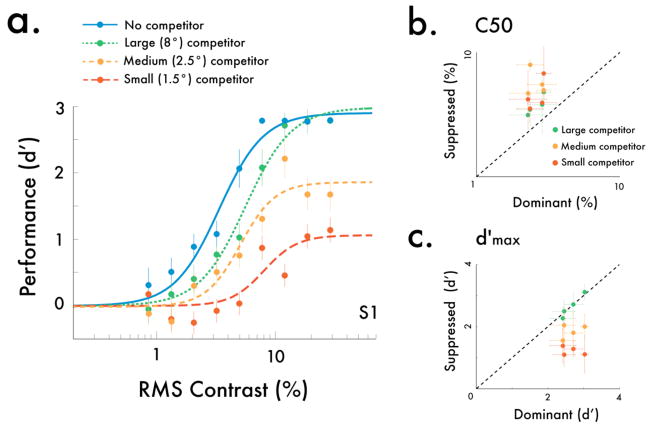Fig 3.
The effect of rivalry on contrast psychometric functions. (a) Example psychometric functions from one observer. When the competing stimulus was the same size as the probe, we found both a reduction in the asymptote, or response gain, as well as a shift in the probe’s psychometric function, or contrast gain. However, as the size of the competitor increased, the response gain modulation decreased, and when the competing stimulus was much larger than the probe, the psychometric functions only shifted in their contrast gain. (b) C50 estimates for each observer, indexing changes in contrast gain. We found decreased contrast gain (higher C50) under suppression relative to an unsuppressed stimulus, regardless of the size of the competing stimulus. (c) d′max estimates for each observer, indexing changes in response gain. We found the strongest decrease in the response gain (lower d′max) when the competing stimulus was the same size as the probe stimulus, and this reduction in response gain diminished as the competitor size increased. Error bars are bootstrapped 95% confidence intervals.

